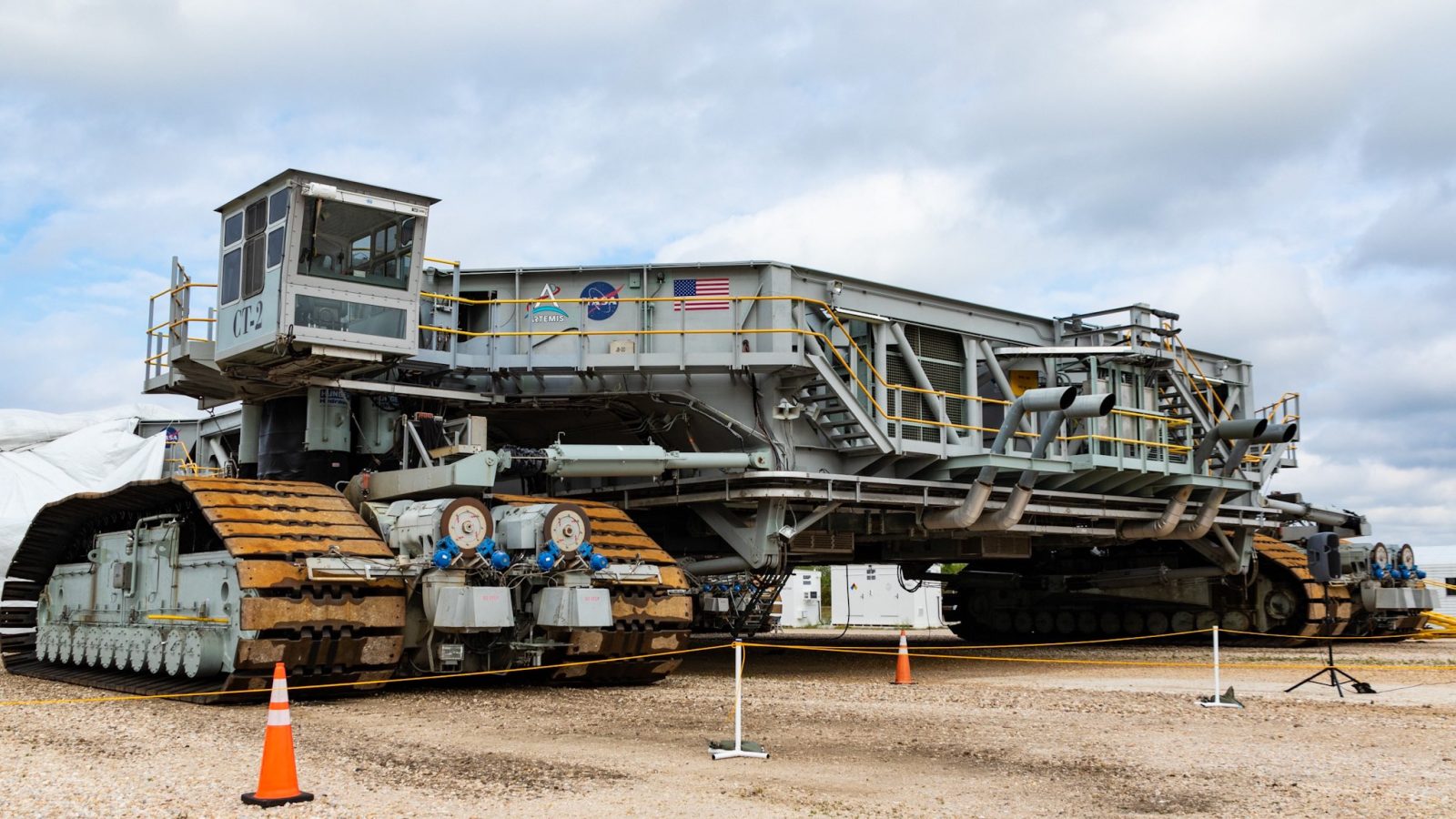
NASA’s crawler-transporter has been certified as the heaviest self-powered vehicle on Earth by Guinness World Records.
The agency’s Exploration Ground Systems was presented the certificate on March 29, at Kennedy Space Center in Florida. Crawler-transporter 2, CT-2, is more than 6.6 million pounds and has the ability to transport up to 18 million pounds. It has technically held this record since 2016, after the completion of modifications it received to support the Artemis program and the Space Launch System rocket and its mobile launcher tower.
CT-2 is one of two crawler-transporters that have been part of the NASA family for 58 years and only it was modified to support the SLS rocket. Both crawlers have supported the Apollo program’s Saturn V and Saturn IB rockets between 1967 and 1975, and all space shuttle orbiters between 1979 and 2011.
After CT-2 received its modifications to support the heavier SLS rocket, it was first used to transport Artemis 1’s SLS in 2022 with the first launch of the Artemis generation which lifted off from LC-39B last November.
This heavy machine delivered the Artemis 1 SLS rocket stack and its mobile launcher to Launch Complex 39B, a journey of 4.2 miles (6.8 kilometers) on the crawler way lasting between 10 and 12 hours.
Once at the pad, a team of skilled drivers and technicians maneuvered the mega vehicle to a series of pedestals, setting it down to within one-sixteenth of an inch of its target.
During the March 29 presentation, NASA’s Exploration Ground Systems was on site to congratulate the team for this benchmark achievement for the massive self-propelled vehicle.
Over the past decade, many important improvements were made to the crawler including updated equalization, generators, and roller bearings that will support “human resumption of deep space exploration for the next 50 years” according to a NASA representative on site for the certification ceremony.
The crawler way itself has also been updated with better laser-guided levelers to help smooth CT-2’s journey to the pad with a top speed of 1.2 miles (1.9 kilometers) per hour, depending on weather and the load.
Crewed launches for the Artemis program are expected to begin in late 2024. The astronauts for the Artemis 2 mission to the Moon are slated to be announced at 11 a.m. EDT on April 3 at NASA’s Johnson Space Center in Houston.

John Giles, Crawler Element Operations Manager for Exploration Ground Systems, was also on-site and spoke about what was next for CT-2.
Giles said the crawler is down for the next few months during which time teams will perform maintenance. This will include corrosion control and the replacement of some of the steering cylinders and shoes on the vehicle’s tracks as it is readied for the next move sometime in June of 2023.
Additionally, emergency egress and escape provisions will be added to the mobile launcher in preparation to support human spaceflight for the Artemis 2 mission. CT-2 will be used to roll the mobile launcher to and from the pad in order to test the newly-integrated life-saving system.
Sam Dove, who has spent the last 25 years as a crawler engineer and driver of the world’s heaviest self-propelled vehicle, also attended the momentous occasion. He said teams will be “fixing plates” that hold up the crawler, repainting most everything as well as lubricating and replacing any worn parts from all the recent moves for Artemis 1. This will even include a general tune-up ahead of the next roll.
FTC: We use income earning auto affiliate links. More.


Comments